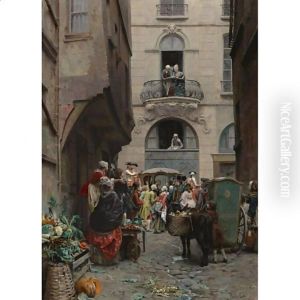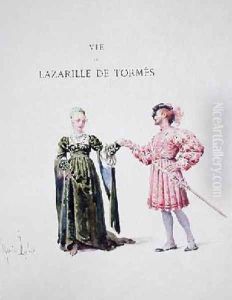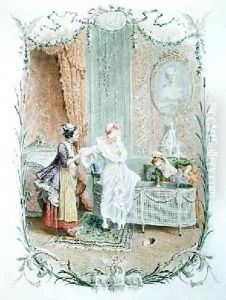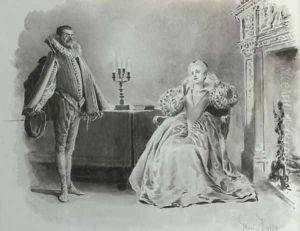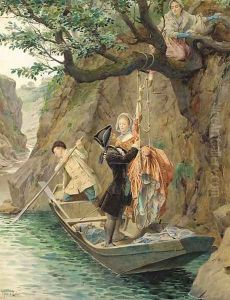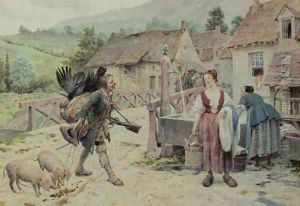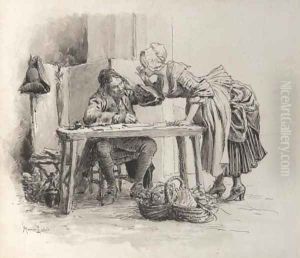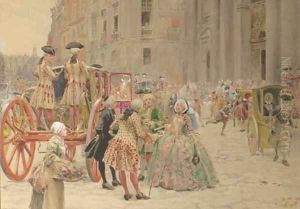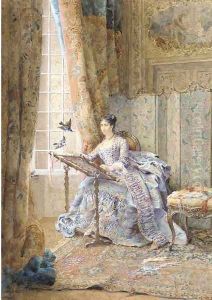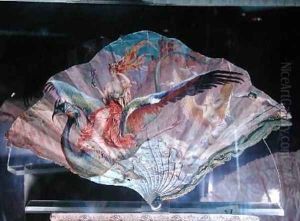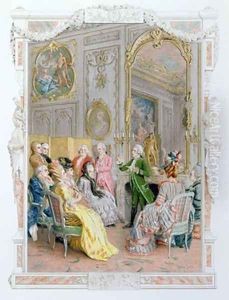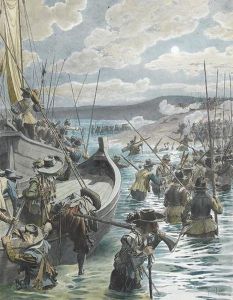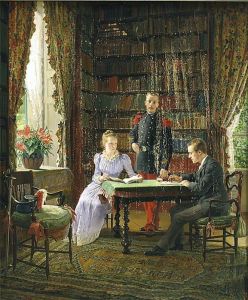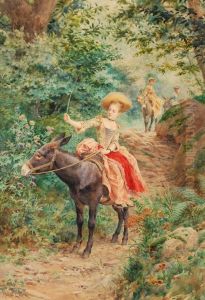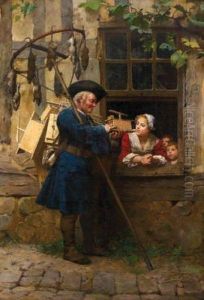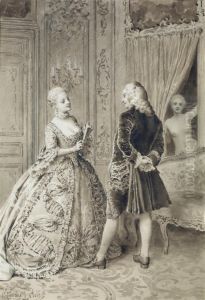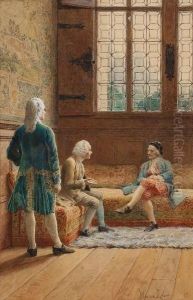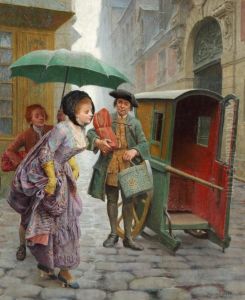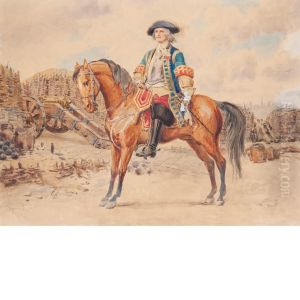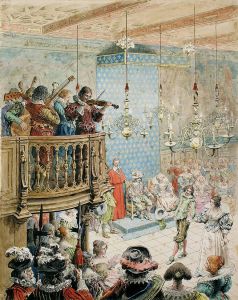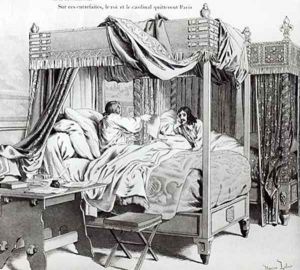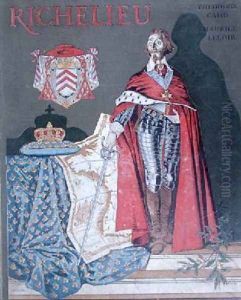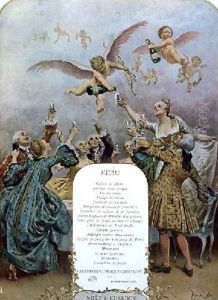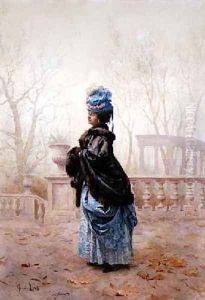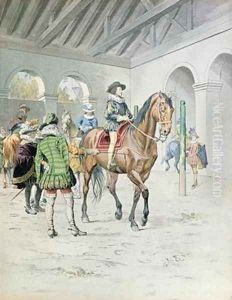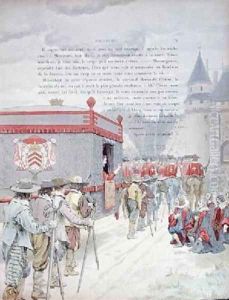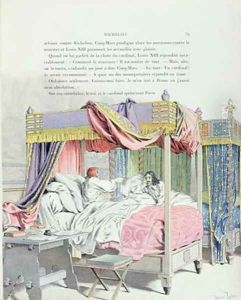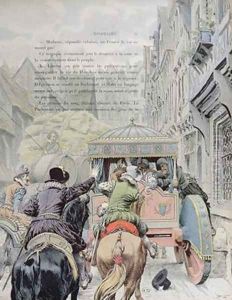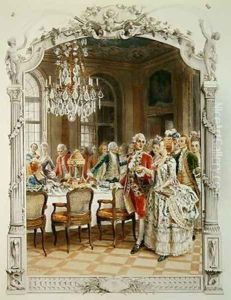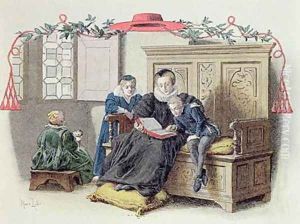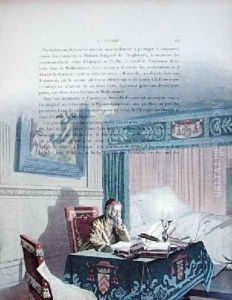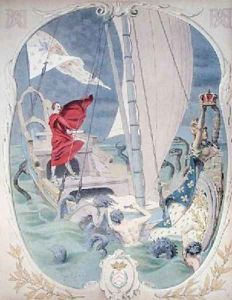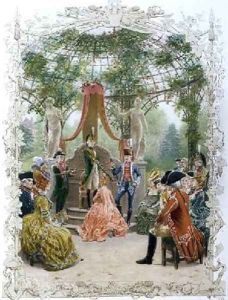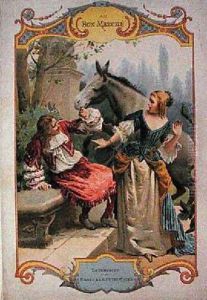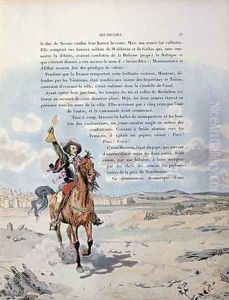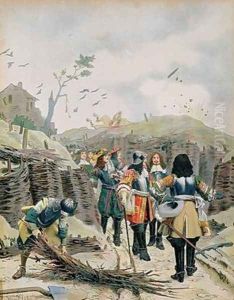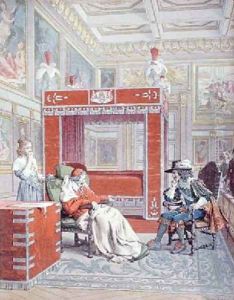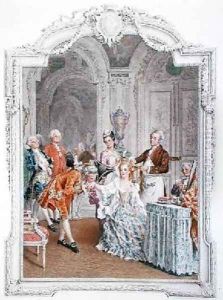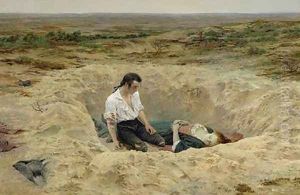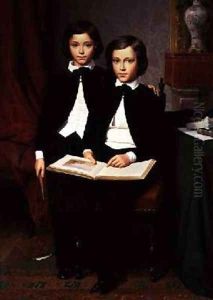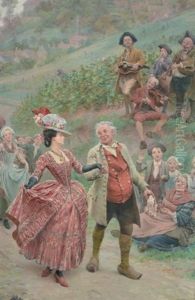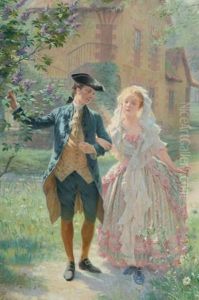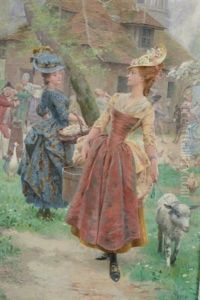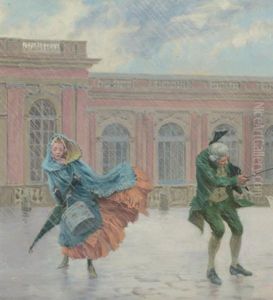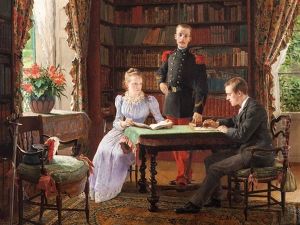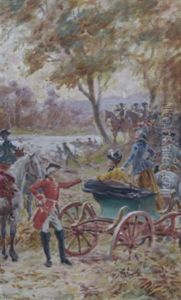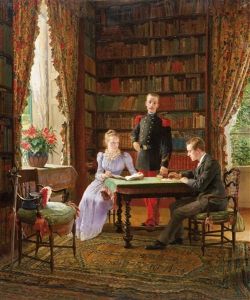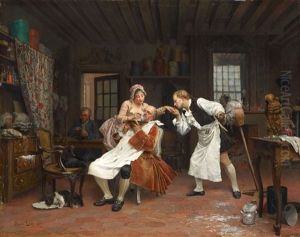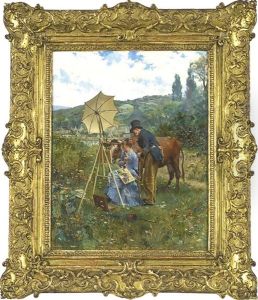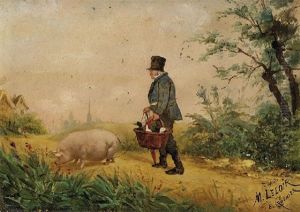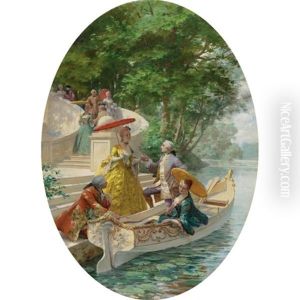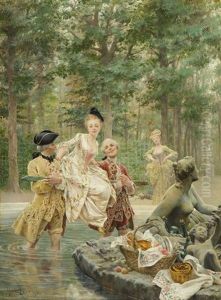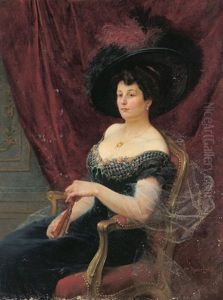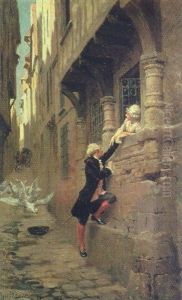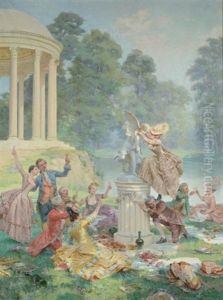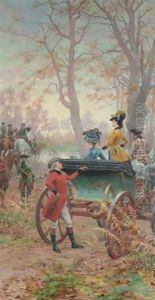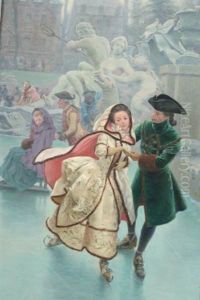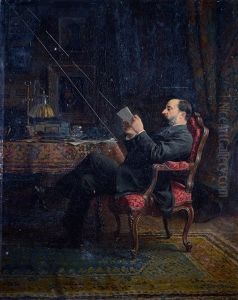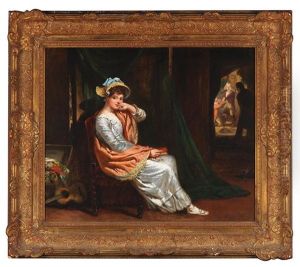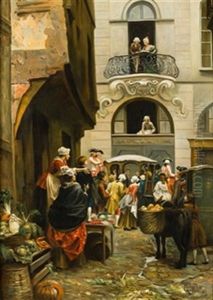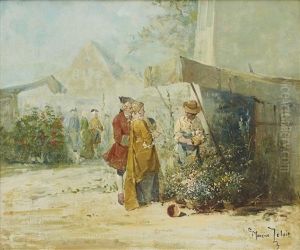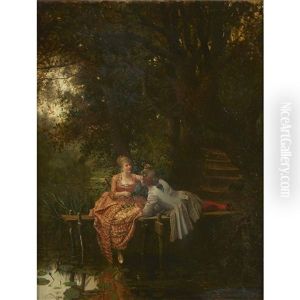Maurice Leloir Paintings
Maurice Leloir was a French painter, engraver, illustrator, historian, and writer, born on November 1, 1853, in Paris. He came from an artistic family; his father was an artist and his mother an opera singer. Leloir showed an early talent for art and was encouraged to pursue his passion by his parents.
Leloir received his artistic training at the École des Beaux-Arts in Paris and was heavily influenced by the French Rococo style, which is characterized by soft colors, graceful lines, and a lighthearted depiction of the aristocratic life. His works often captured the elegance and frivolity of 18th-century French society. A significant portion of his career was dedicated to historical genre painting, where he meticulously researched costumes and settings to accurately depict historical events.
Apart from painting, Leloir was also a renowned costume and fashion historian. He founded the Société de l'Histoire du Costume (Society for the History of Costume) in 1907, reflecting his deep interest in the history of fashion. Through his extensive studies and collections, he became an authority on the subject, publishing numerous books and articles on costume history.
Moreover, Maurice Leloir worked as an illustrator, contributing to the visual narrative of literary classics by authors such as William Shakespeare, Alexandre Dumas, and Molière. His illustrations further demonstrated his expertise in historical accuracy and his capability to translate literary scenes into vivid artwork.
During his lifetime, Leloir achieved considerable success and was awarded the Legion of Honour, France's highest order of merit, for his contributions to art and culture. His work was exhibited in various salons and galleries, gaining him recognition and popularity not only in France but internationally.
Maurice Leloir passed away on October 7, 1940, in Paris, leaving behind a legacy of artwork and scholarly contributions that continue to influence the fields of art history and costume studies. His dedication to historical accuracy and his romanticized view of the past are evident in his extensive body of work, which remains appreciated by art lovers and historians alike.
